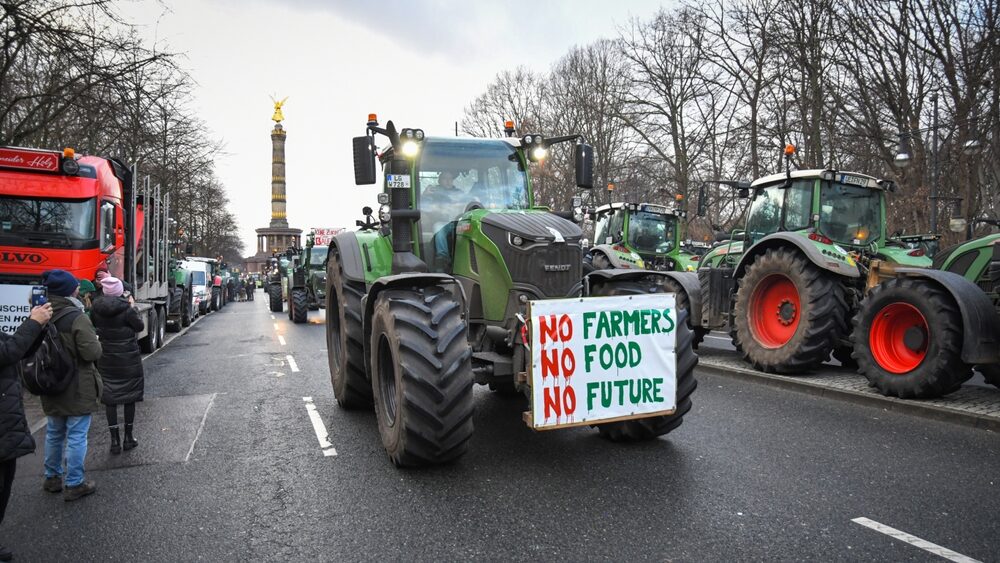From late 2023 to early 2024, Europe has witnessed a wave of protests led by farmers and livestock farmers across multiple countries. These demonstrations have highlighted various issues affecting the agricultural sector, from trade agreements and environmental restrictions to price volatility and the use of agrochemicals. From Brussels to Madrid and Warsaw we have seen images of tractors blocking major highways and city centers, as well as police controlling the protests.
Furthermore, these demonstrations have also revealed a sector tired of not being able to predict their income with any certainty, where retiring without a pension is common and rarely receiving the social recognition they deserve. Worse still, once retired, the next generation is reluctant to step in due to the poor quality of life associated with the work. This is the reality of farming in today’s Europe, a scenario mirrored globally.
What is the root cause of the protests?
Although the causes of the protests are diverse and vary by country, several common factors exist. International trade agreements have allowed the entry of agricultural and livestock products from non-EU countries that are not subject to the same environmental and food safety restrictions. This has created unfair competition, as European producers are required to comply with strict regulations that increase their production costs, reducing its profitability. EU environmental policies, designed to protect biodiversity and reduce pollution, have imposed significant restrictions on farmers. Although these measures are essential for long-term sustainability, many in the sector feel that sufficient support or viable alternatives have not been provided to adapt to the new requirements.
The volatility of prices for raw materials and necessary inputs for agricultural and livestock production creates constant uncertainty. This economic instability makes long-term planning difficult and jeopardizes the viability of agricultural and livestock operations. Large distributors and food chains have a disproportionate power in price-setting, negatively affecting producers. The pressure to keep sales prices low while input and regulatory costs rise has pushed many farmers and livestock farmers to the brink of bankruptcy. Moreover, in countries such as Poland, Germany or Romania, farmers are rejecting the influx of cheap Ukrainian grain, as consequence of the Russian war, and its impact on their livelihoods.
On the other hand, while new technologies can offer solutions to increase efficiency and reduce environmental impact, their implementation often requires significant investments. Many producers lack the financial resources necessary to adopt these technologies effectively.
What do different farmers demand?
Although the protest are not isolated incidents, but rather a common expression of frustration and disillusion; they have taken different forms, roots and objectives depending on the specific characteristics of each region. Thereby, it is noteworthy that there is no monolithic and uniform view, but a variety of opinions on certain aspects, such as the position adopted regarding environmental regulations. However, they all agree that the problems of farmers and the economic viability of their activities must be at the center of the discussion when new community policies are designed.
Regarding the causes and claims of each region, French farmers have demanded greater subsidies and government support to comply with environmental regulations without losing competitiveness. Protests have included road blockades and occupations of government offices. In Spain, livestock farmers have highlighted the crisis in dairy and meat sector prices and have called for greater transparency and regulation of prices set by large supermarket chains. German farmers have focused their demands on the need for greater investment in sustainable technologies and support for the transition to more ecological practices. They have staged marches in Berlin and other major cities. In Italy, protests have emphasized the issue of trade agreements that allow the entry of agricultural products from countries with less stringent regulations. Italian farmers have demanded a review of these policies to protect local production.
What role do restrictions on agrochemicals play?
A recurring theme in the protests is the use of agrochemicals, some of them considered as Contaminants of Emerging Concerns (CoEC). While many pesticides and herbicides are banned in the EU due to their harmful effects on health and the environment, products from other countries that use these chemicals continue to enter the European market. This creates a situation of unfair competition, as European producers must bear additional costs to comply with regulations, while imported products do not face the same restrictions. A more equitable system that does not harm European farmers is needed. It would also be an opportunity to export and implement the technologies developed in the European Union to the countries from which we import these products
What is the future hold?
The new configuration of the European Parliament post June 9th elections is crucial for the future of agricultural policies in the EU. The new parliament formed after these elections will play a decisive role in shaping regulations that directly affect European farmers and livestock breeders. The composition and alliances within the parliament will influence how key issues such as environmental regulations, distribution of agricultural funds and the sector’s competitiveness against imports from countries with different standards are addressed.
The new landscape could also impact the future direction of the Common Agricultural Policy (CAP), the primary framework for financial support and regulation for agriculture in the EU. Parties and coalitions dominating the parliament will have the opportunity to drive significant
changes in the CAP, addressing contemporary challenges like climate change and food security. The influence of the European Parliament in these decisions underscores the importance of civic engagement and informed voting in European elections, given their direct impact on farmers’ lives and the future of the agricultural sector in Europe.
What challenges do we face and what impacts do we seek?
The European Commission must face these challenges using all the tools at its disposal:
- Invest in sustainable technologies that can reduce pollution and improve production efficiency without increasing costs for farmers and livestock farmers. These technologies must be accessible and affordable.
- Review trade agreements to ensure that imported products comply with the same environmental and food safety standards as those produced in the EU.
- Provide financial support to help farmers and livestock farmers adapt to new environmental regulations without risking their economic viability.
- Offer education and training programs so that producers can adopt more sustainable and technologically advanced agricultural practices.
- Implement measures to influence prices set by large distributors and food chains, ensuring that producers receive a fair price for their products.
The protests by farmers in Europe are an urgent call to action to address the complex and multifaceted problems facing the sector. Through research and the implementation of innovative and fair solutions, it is possible to create a more sustainable and just future for agriculture and livestock farming in Europe. Collaboration between governments, producers, and the scientific community is essential to achieving these goals and ensuring the health of the environment and the economic viability of the agricultural sector.





